 |
 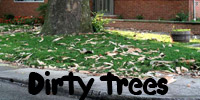 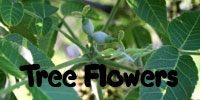 |
Tree Flowers (and fruits)Black walnutA common pattern for some wind-pollinated species such as oaks, hickories and walnuts, is for the pollen-producing male flowers to be individually tiny, but presented abundantly in elongate drooping finger-like catkin. Nearly on the same tree there are female flowers which are slightly larger, and much fewer in number. These eventually mature into the familiar nut or nut-like fruit. During the spring and summer of 2006 I followed the progress of flowering on a black walnut tree (Juglans nigra, family Juglandaceae) alongside Indianola Avenue near Columbus School for the Deaf. Here is a flowering branch. This species is monoecious, i.e., the individual flowers are either male or female, but both types are borne on the same tree. Being wind-pollinated, the flowers are not showy.  Flowering branch of black walnut, May 22, 2006, Columbus OH. Seen
closer, the female flowers display
pollen-receptive stigmas hat are fairly elaborate "rabbit
ears" presenting a large enough surface area to be encountered by
pollen drifting in the wind.
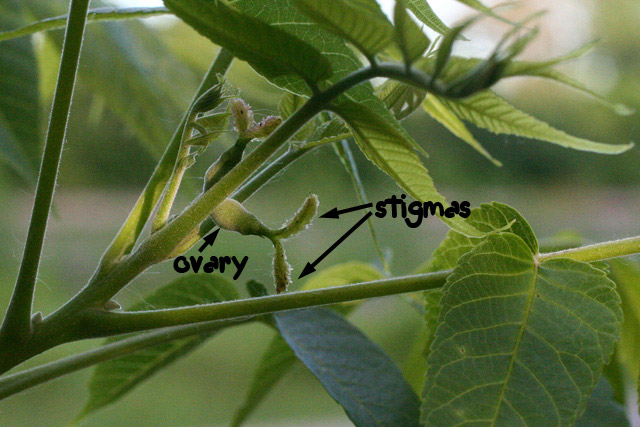 Black walnut pistillate flowers, May 22, 2006, Columbus, OH. 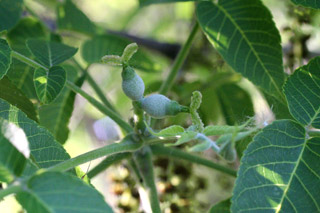 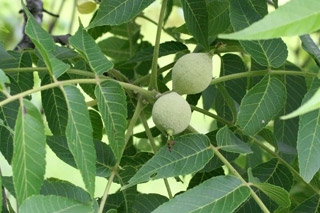 Black walnut very young fruits in late spring, 2006 (left: May 28, and right: June 6). By this time the spent staminate catkins have fallen to the ground. By late summer the walnuts are almost
ripe, ready to be snatched by a squirrel or fall to the ground. The
great 17th-century Swedish naturalist Carolus Linneaus was
the "father of systemtic botany" who developed the two-part naming
system still in use today. Linneaus gave latin names to many
North American plants. He must have had quite an active imagination, as
he named this one "Juglans," short for "Jupiter's glands."
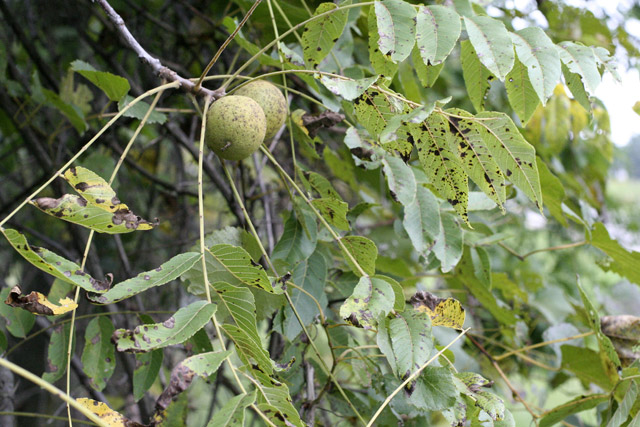 Black walnut, September 20, 2006, Columbus OH. In early autumn, black walnut fruits fall
to the ground where their outer husk slowly decays. They are well-known
for leaching chemicals into the soil that inhibit the growth of other
plants, an ecological interaction known as "allelopathy," (literally
meaning "making your neighbor sick"). Black walnuts are edible and
appreciated greatly by those who somehoew manage to crack open the very
thick husks. The walnut of commerce, grown mainly in California, is the
English walnut, Juglans regia.
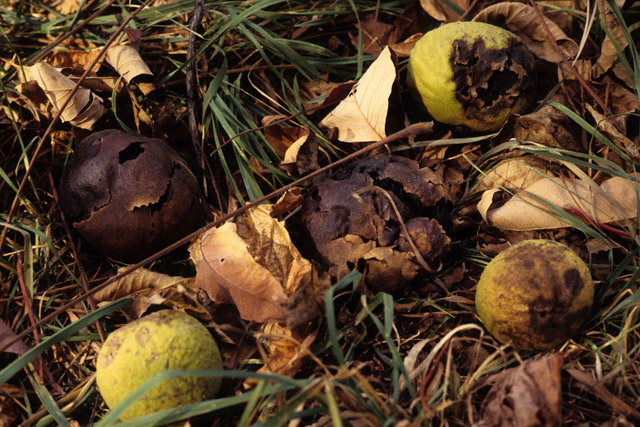 Black walnut fruits on the ground (location and date unknown). The one on the left looks like a face, winking. HOME TREE FLOWERS MENU |